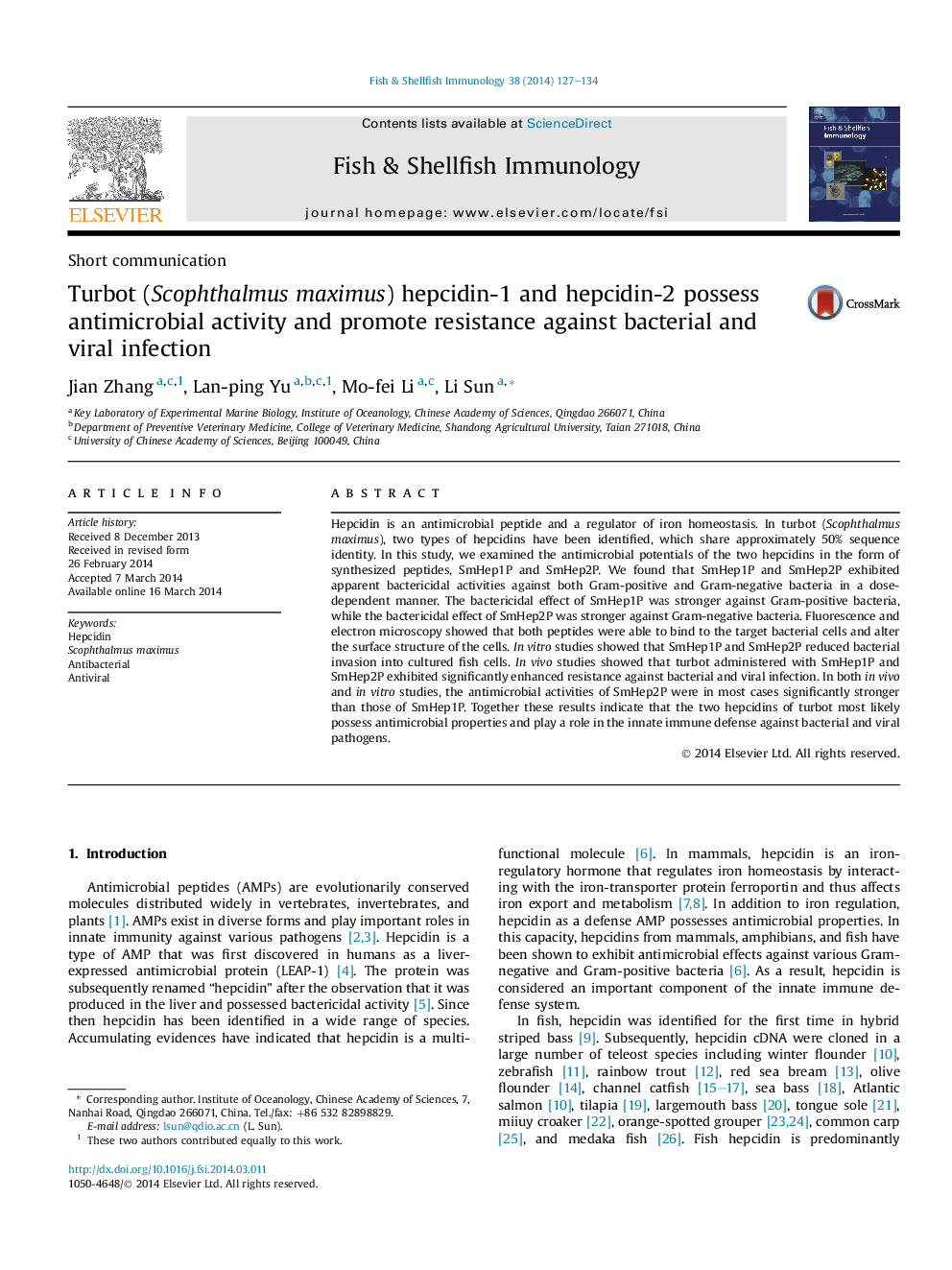| Article ID | Journal | Published Year | Pages | File Type |
|---|---|---|---|---|
| 10972014 | Fish & Shellfish Immunology | 2014 | 8 Pages |
Abstract
Hepcidin is an antimicrobial peptide and a regulator of iron homeostasis. In turbot (Scophthalmus maximus), two types of hepcidins have been identified, which share approximately 50% sequence identity. In this study, we examined the antimicrobial potentials of the two hepcidins in the form of synthesized peptides, SmHep1P and SmHep2P. We found that SmHep1P and SmHep2P exhibited apparent bactericidal activities against both Gram-positive and Gram-negative bacteria in a dose-dependent manner. The bactericidal effect of SmHep1P was stronger against Gram-positive bacteria, while the bactericidal effect of SmHep2P was stronger against Gram-negative bacteria. Fluorescence and electron microscopy showed that both peptides were able to bind to the target bacterial cells and alter the surface structure of the cells. In vitro studies showed that SmHep1P and SmHep2P reduced bacterial invasion into cultured fish cells. In vivo studies showed that turbot administered with SmHep1P and SmHep2P exhibited significantly enhanced resistance against bacterial and viral infection. In both in vivo and in vitro studies, the antimicrobial activities of SmHep2P were in most cases significantly stronger than those of SmHep1P. Together these results indicate that the two hepcidins of turbot most likely possess antimicrobial properties and play a role in the innate immune defense against bacterial and viral pathogens.
Related Topics
Life Sciences
Agricultural and Biological Sciences
Aquatic Science
Authors
Jian Zhang, Lan-ping Yu, Mo-fei Li, Li Sun,
